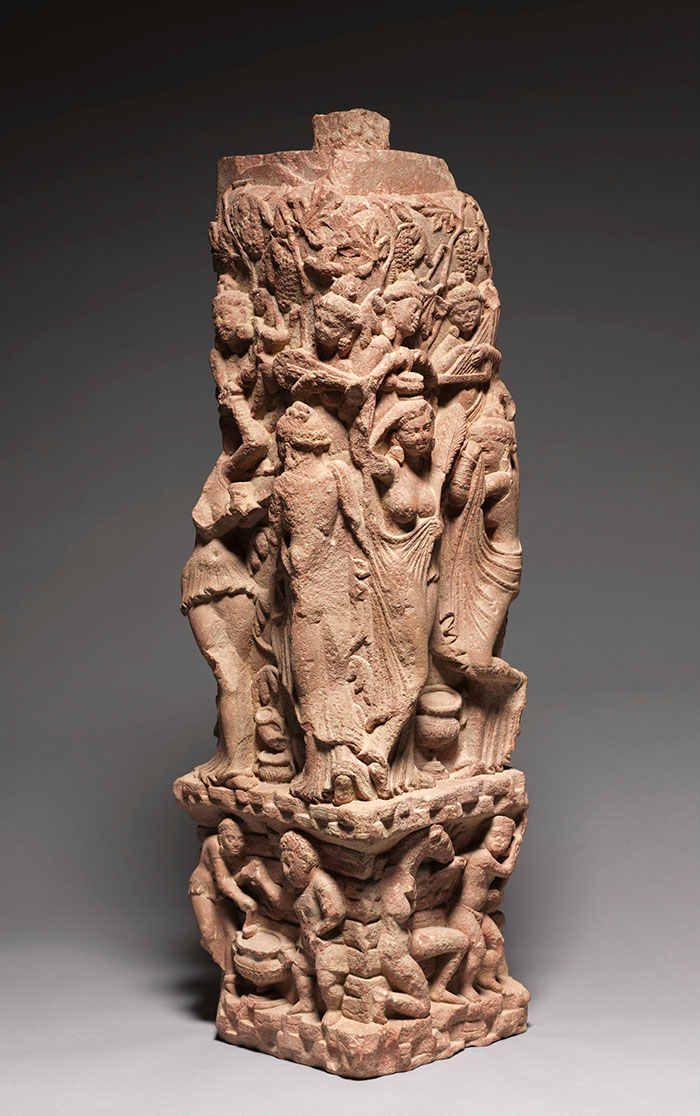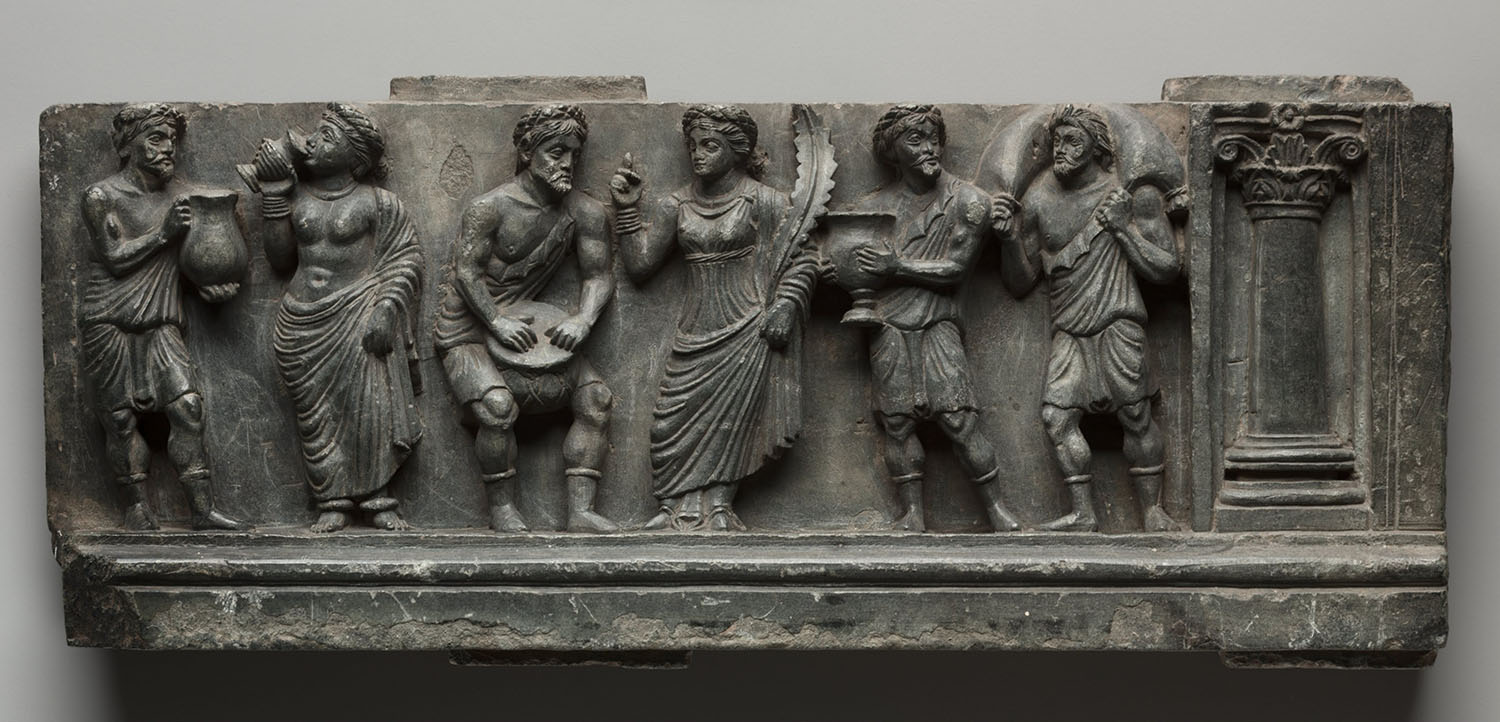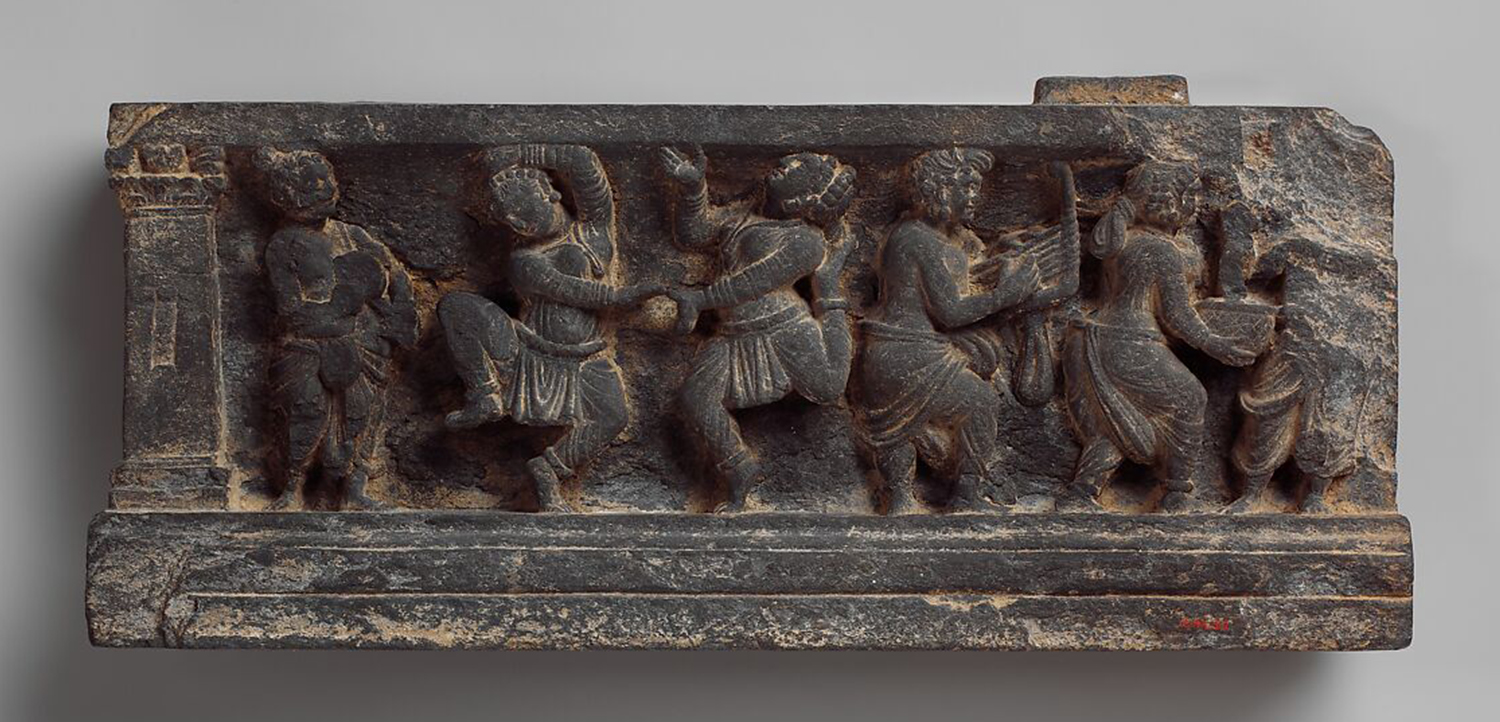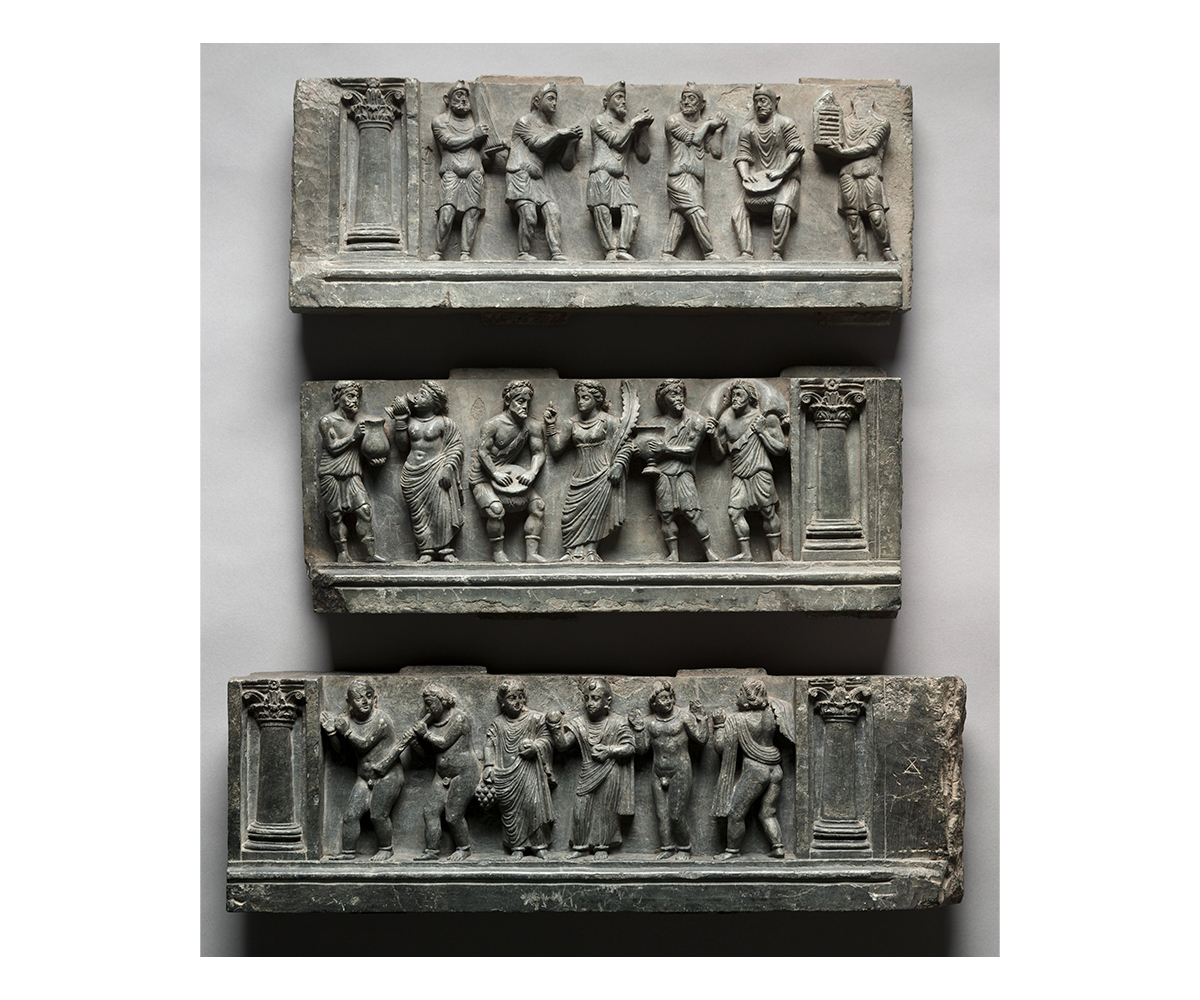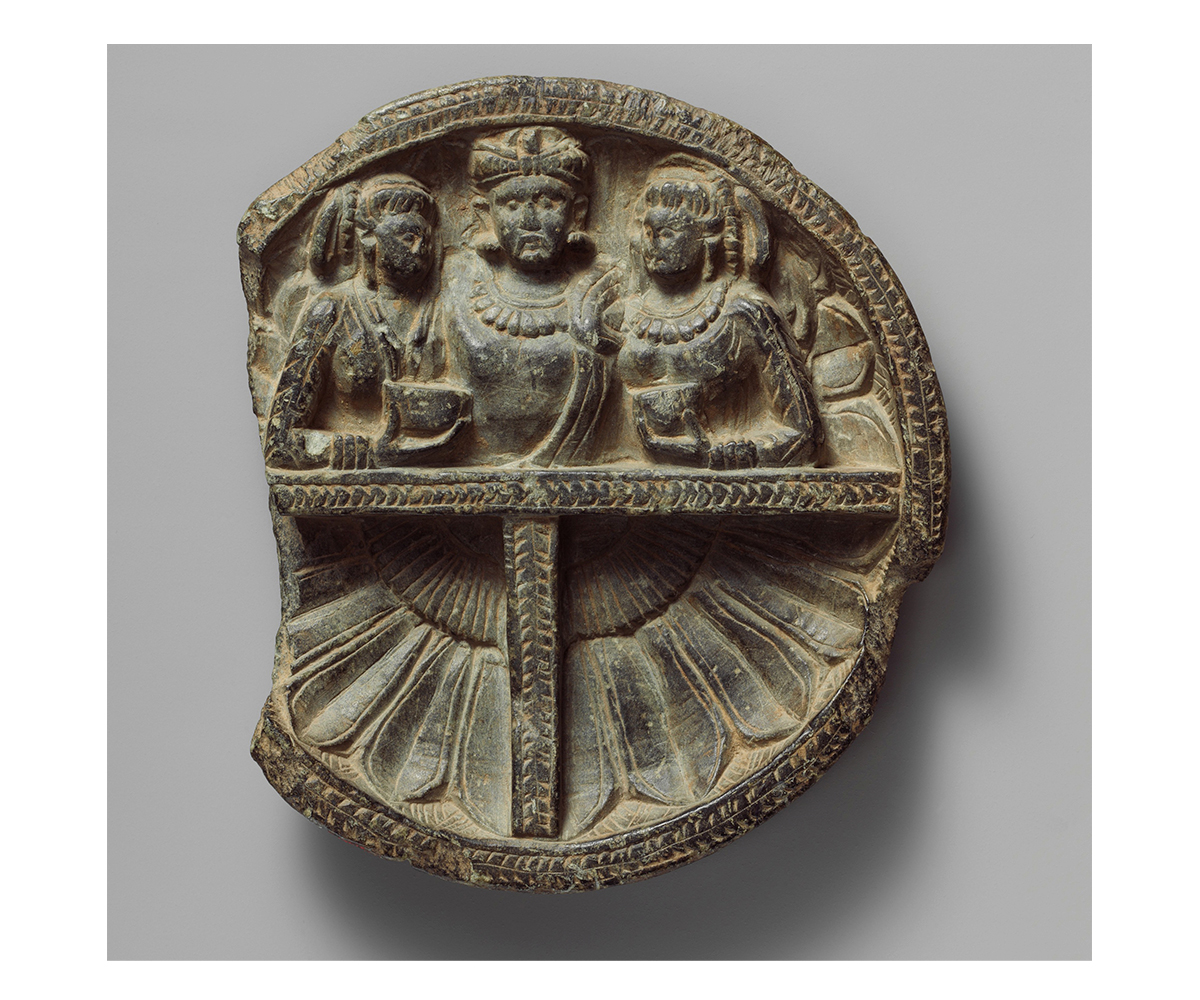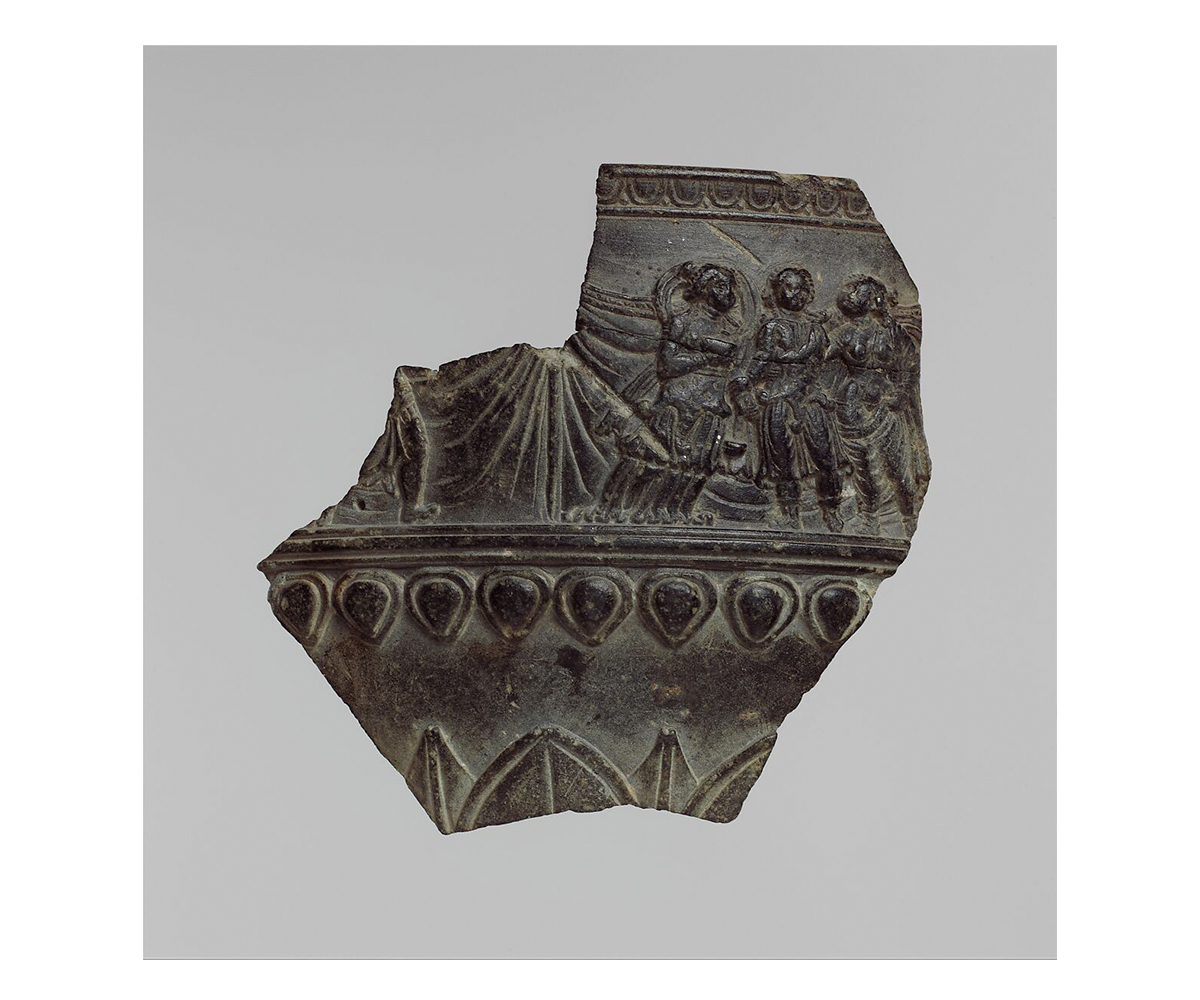ARTICLE
Drinking Scenes in Gandharan Art
The images on the dishes as well as the reliefs are non-narrative and depict a variety of subjects, including guardian couples, inebriated people being supported by attendants and, in one instance, rows of attendant figures around a man who some scholars interpret to be Dionysus. The central figure in some images is interpreted as Dionysus based on the grapes in his hair or the animal skin he wears, as well as his being offered wine, being flanked by wreathed male figures, or receiving a goat — an animal that is ritually sacrificed to him during festivals. Other scholars also consider this figure to be Indra, who was interpreted as a Dionysian figure in the Hellenistic context. The guardian couples have been variously identified as Panchika and Hariti or Ardoxo and Pharro.
Wine cups and grapes are recurring motifs in these images. Although wine-drinking is censured in Buddhism, textual and archaeological sources reveal the presence of well-developed pre-Buddhist traditions of viticulture and viniculture in the region. These are further corroborated by records such as Arrian’s Indica — which described India as abundant in grapevines believed to have been brought to the region by Dionysus himself — and Kautilya’s Arthashastra, which mentions imports of a special kind of wine from Kapisiyana (corresponding to Kapisa or the region around present-day Begram, Afghanistan). Archaeological finds such as soot-blackened vessels, round-bottomed flasks and condensers in industrial numbers in Taxila and Shaikhan Dheri also serve as evidence of wine production and distillation in Gandhara under the Kushan administration.
As with most Gandharan art, there is some ambiguity around the influences for the inebriated figures, which seem to simultaneously draw on Hellenistic, Roman, Egyptian or Ptolemaic, Hindu, Buddhist and Zoroastrian cultures in both style and subject matter. While some scholars consider the scenes to be an aspect of the cult of Dionysus — and therefore, a product of Hellenistic influence on Gandharan art — others highlight a more indigenous source for the images in the ancient cults of yakshas and yakshis, who were ritually offered meat and alcohol and were also custodians of amrita, or the elixir of eternal life, which was held in chalices.
These scenes thus indicate the tendency of Gandharan art to defy the binaries of Hellenism and Buddhism as well as of indigenous and foreign influences, to present multiple meanings and interpretations that would have been understood by the diverse and cosmopolitan audience of the region.
Bibliography
Ahuja, Naman P. “Exploring Iconographic Syncretism in Gandhara.” The Aesthetics Project. Filmed March 2, 2016. YouTube video, 1:36:58. https://www.youtube.com/watch?v=4V65StZ1vAU.
Behrendt, Kurt A. The Art of Gandhara in the Metropolitan Museum of Art. New York: Metropolitan Museum of Art, 2007.
Brancaccio, Pia, and Xinru Liu. “Dionysus and Drama in the Buddhist Art of Gandhara.” Journal of Global History 4, no. 2 (July 2009): 219–44. https://doi.org/10.1017/S1740022809003131.
Carter, Martha L. “Dionysiac Aspects of Kushan Art.” Ars Orientalis 7 (1968): 121–46. http://www.jstor.org/stable/4629244.
Carter, Martha L. “The Bacchants of Mathura: New Evidence of Dionysiac Yaksha Imagery from Kushan Mathura.” The Bulletin of the Cleveland Museum of Art 69, no. 8 (October 1982): 247–57. http://www.jstor.org/stable/25159785.
Falk, Harry. “Making Wine in Gandhara under Buddhist Monastic Supervision.” Bulletin of the Asia Institute 23 (2009): 65–78. http://www.jstor.org/stable/24049424.
Galli, Marco. “Hellenistic Court Imagery in the Early Buddhist Art of Gandhara.” Ancient Civilizations from Scythia to Siberia 17 (2011): 279–329.
Muzio, Ciro Lo. “On the Relationship between Gandhāran Toilet-Trays and the Early Buddhist Art of Northern India.” In Problems of Chronology in Gandharan Art: Proceeding of the First International Workshop of the Gandhara Connections Project, edited by Wannaporn Rienjang and Peter Stewart, 149–64. Archaeopress Publishing, 2018.




